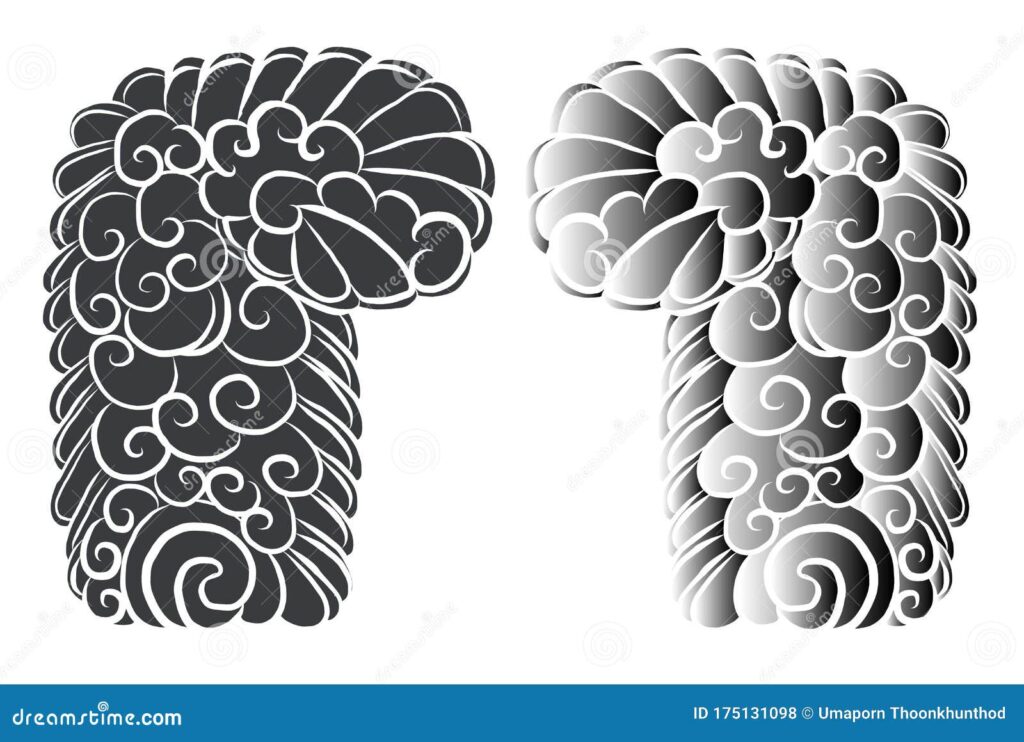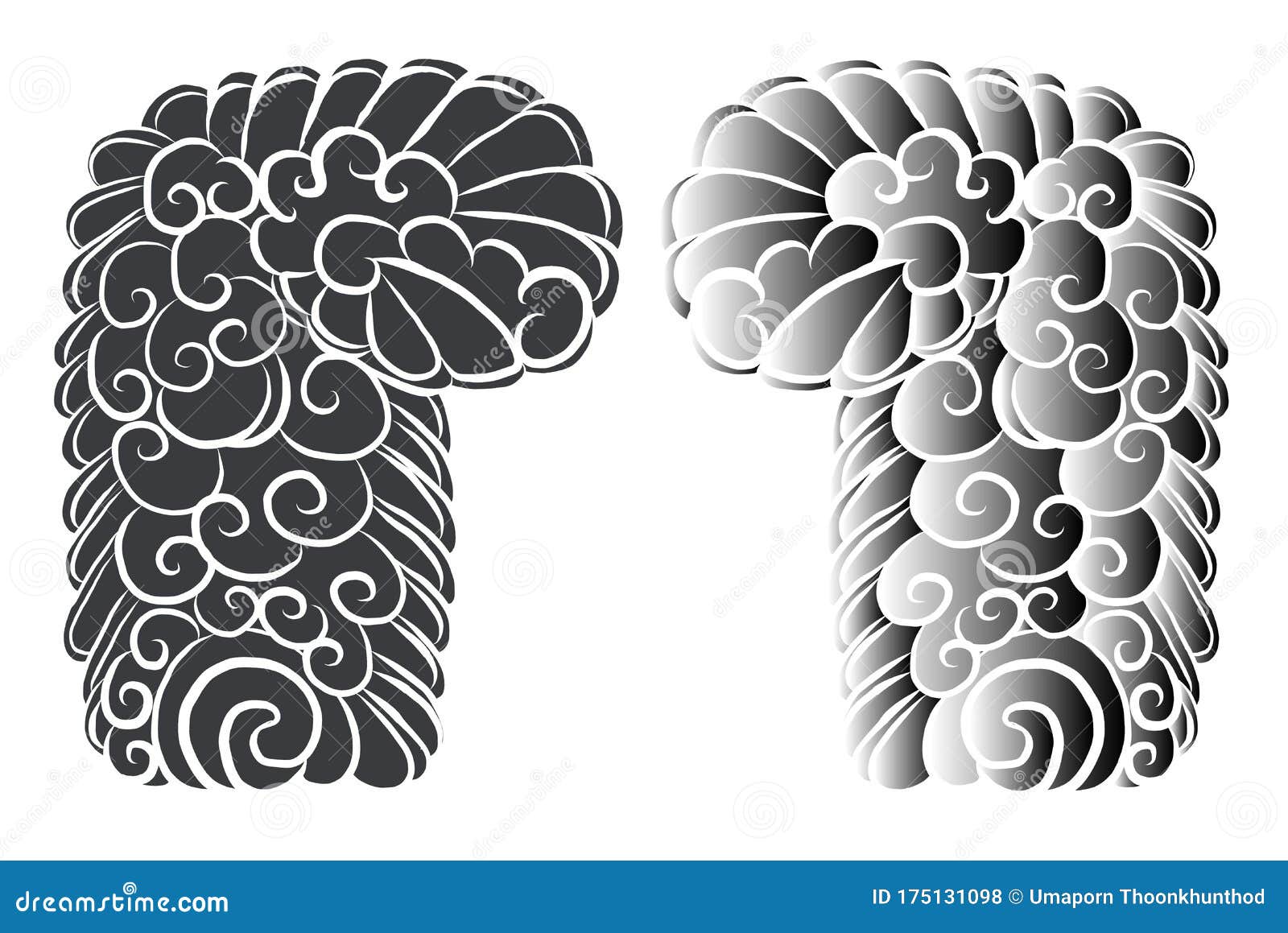
Unveiling the Artistry: Exploring Japanese Tattoo Background Designs
Japanese tattoos, also known as Irezumi, are renowned for their intricate designs, vibrant colors, and profound symbolism. While the primary subject matter often takes center stage, the background designs play a crucial role in enhancing the overall aesthetic and narrative of the tattoo. Understanding the significance of these Japanese tattoo background designs is essential for appreciating the depth and complexity of this ancient art form. This article delves into the world of Japanese tattoo background designs, exploring their history, common motifs, and the meanings they convey.
A Brief History of Japanese Tattoo Backgrounds
The history of Japanese tattoo background designs is deeply intertwined with the evolution of Irezumi itself. Initially used for spiritual and decorative purposes, tattoos in Japan gained prominence during the Edo period (1603-1868). During this time, tattoos became associated with the working class and, later, the Yakuza. The use of background elements became increasingly sophisticated, transforming simple designs into elaborate full-body suits known as ‘horimono’. These background elements were not merely decorative; they served to connect the main subject matter and create a cohesive and dynamic composition.
Common Motifs in Japanese Tattoo Background Designs
Several recurring motifs appear in Japanese tattoo background designs, each carrying its own symbolic weight. These elements are carefully chosen to complement the main subject and add layers of meaning to the overall design.
Water
Water, in its various forms, is a ubiquitous element in Japanese tattoo background designs. Representing life, change, and adaptability, water can be depicted as gentle waves, turbulent currents, or cascading waterfalls. The movement of water often symbolizes the flow of life and the ability to overcome obstacles. Koi fish swimming upstream against a waterfall are a particularly potent symbol of perseverance and success.
Clouds
Clouds are another common motif, symbolizing transformation, mystery, and the ephemeral nature of existence. Often depicted as swirling and stylized forms, clouds can add depth and dimension to the tattoo. They can also represent the heavens and the connection between the earthly and spiritual realms. The arrangement and style of the clouds contribute to the overall mood and atmosphere of the tattoo.
Wind Bars
Wind bars, or ‘kaze’, are stylized representations of wind currents. They are often used to fill negative space and create a sense of movement and energy within the tattoo. Wind bars can also symbolize change, freedom, and the power of nature. They are frequently incorporated into designs featuring dragons, tigers, or other powerful creatures to emphasize their dynamism and force.
Flowers
Flowers play a significant role in Japanese tattoo background designs, with each flower carrying its own unique symbolism. Cherry blossoms (sakura) represent the fleeting nature of life and beauty, while chrysanthemums (kiku) symbolize longevity and perfection. Peonies (botan) are associated with wealth, prosperity, and good fortune. The choice of flower depends on the desired message and the overall aesthetic of the tattoo.
Rocks and Mountains
Rocks and mountains symbolize strength, stability, and resilience. They can represent the enduring power of nature and the ability to withstand adversity. Mountains, in particular, often evoke a sense of grandeur and majesty. Rocks are often depicted with intricate textures and shading to create a sense of realism and depth.
The Significance of Color in Japanese Tattoo Backgrounds
Color plays a crucial role in Japanese tattoo background designs, with each color carrying its own symbolic meaning. Red is associated with passion, energy, and protection, while black represents strength, mystery, and authority. Blue symbolizes calmness, tranquility, and healing, while yellow signifies wealth, prosperity, and happiness. The skillful use of color can enhance the visual impact of the tattoo and amplify its symbolic message.
The Role of the Tattoo Artist
The tattoo artist plays a pivotal role in creating a successful Japanese tattoo background design. A skilled artist will have a deep understanding of the history, symbolism, and techniques involved in Irezumi. They will work closely with the client to develop a design that is both aesthetically pleasing and personally meaningful. The artist will also take into account the client’s body shape and skin tone to ensure that the tattoo looks its best. Finding an artist specializing in traditional Japanese tattooing is paramount to achieving an authentic and well-executed piece. [See also: Choosing a Tattoo Artist].
Considerations When Choosing a Japanese Tattoo Background Design
When choosing a Japanese tattoo background design, several factors should be considered. First and foremost, it is important to understand the symbolism of the various motifs and colors. The design should be personally meaningful and reflect the client’s values and beliefs. It is also important to consider the placement of the tattoo on the body and how the background elements will interact with the main subject matter. A well-designed background should enhance the overall aesthetic of the tattoo and create a cohesive and visually stunning piece of art.
Examples of Stunning Japanese Tattoo Background Designs
Numerous examples showcase the beauty and artistry of Japanese tattoo background designs. A dragon tattoo with swirling clouds and wind bars can evoke a sense of power and dynamism, while a koi fish tattoo with flowing water and cherry blossoms can symbolize perseverance and beauty. A tiger tattoo with bamboo and rocks can represent strength and resilience, while a phoenix tattoo with flames and peonies can symbolize rebirth and prosperity. The possibilities are endless, and the only limit is the imagination.
The Future of Japanese Tattoo Background Designs
The art of Japanese tattoo background designs continues to evolve and adapt to contemporary trends. While traditional motifs and techniques remain popular, modern artists are also experimenting with new styles and approaches. The fusion of traditional and contemporary elements is creating a new wave of innovative and visually stunning tattoos. As Irezumi continues to gain recognition as a legitimate art form, the future of Japanese tattoo background designs looks brighter than ever.
Conclusion
Japanese tattoo background designs are an integral part of Irezumi, adding depth, meaning, and visual appeal to the overall composition. Understanding the history, symbolism, and techniques involved in creating these designs is essential for appreciating the artistry and complexity of this ancient art form. Whether you are considering getting a Japanese tattoo yourself or simply admiring the work of others, take the time to appreciate the intricate details and profound symbolism of the background elements. They are often the unsung heroes of Japanese tattoo art, playing a crucial role in bringing the entire piece to life. The careful selection and placement of these background elements can transform a simple tattoo into a powerful and meaningful work of art. [See also: The Meaning Behind Japanese Tattoos]. By carefully considering the various motifs, colors, and techniques, you can create a Japanese tattoo that is both aesthetically pleasing and deeply personal. The enduring popularity of Irezumi is a testament to its timeless beauty and enduring appeal. The artistry of Japanese tattoo background designs ensures that this art form will continue to captivate and inspire for generations to come.

